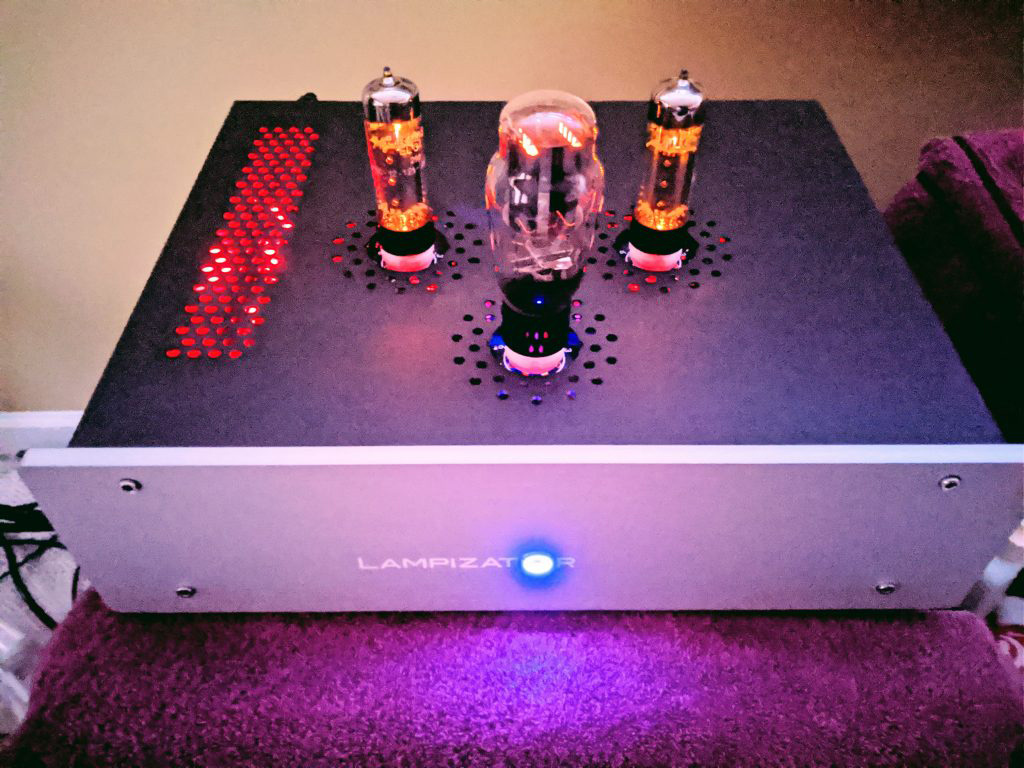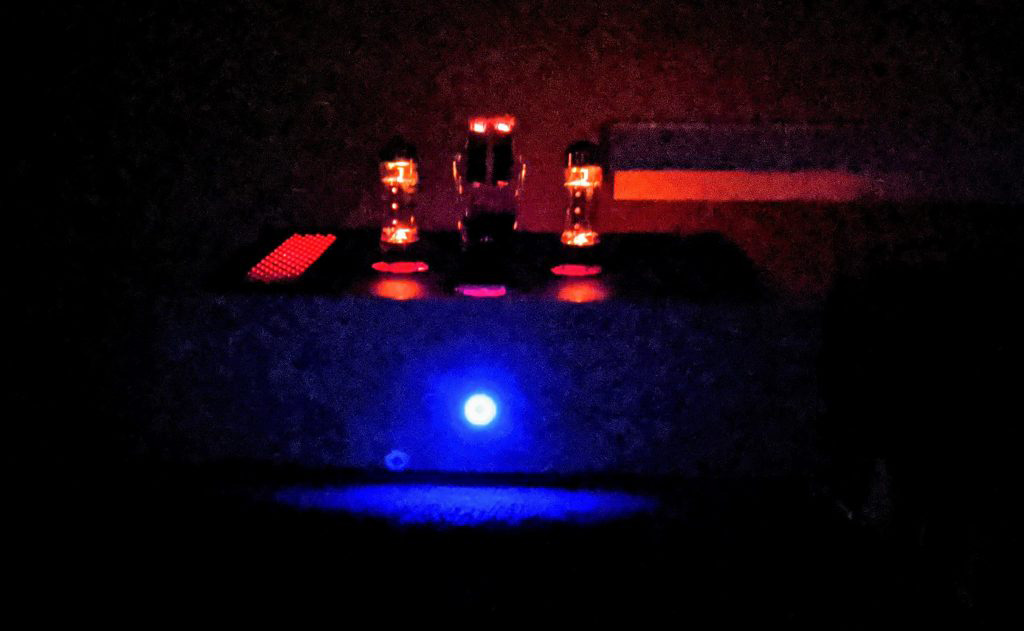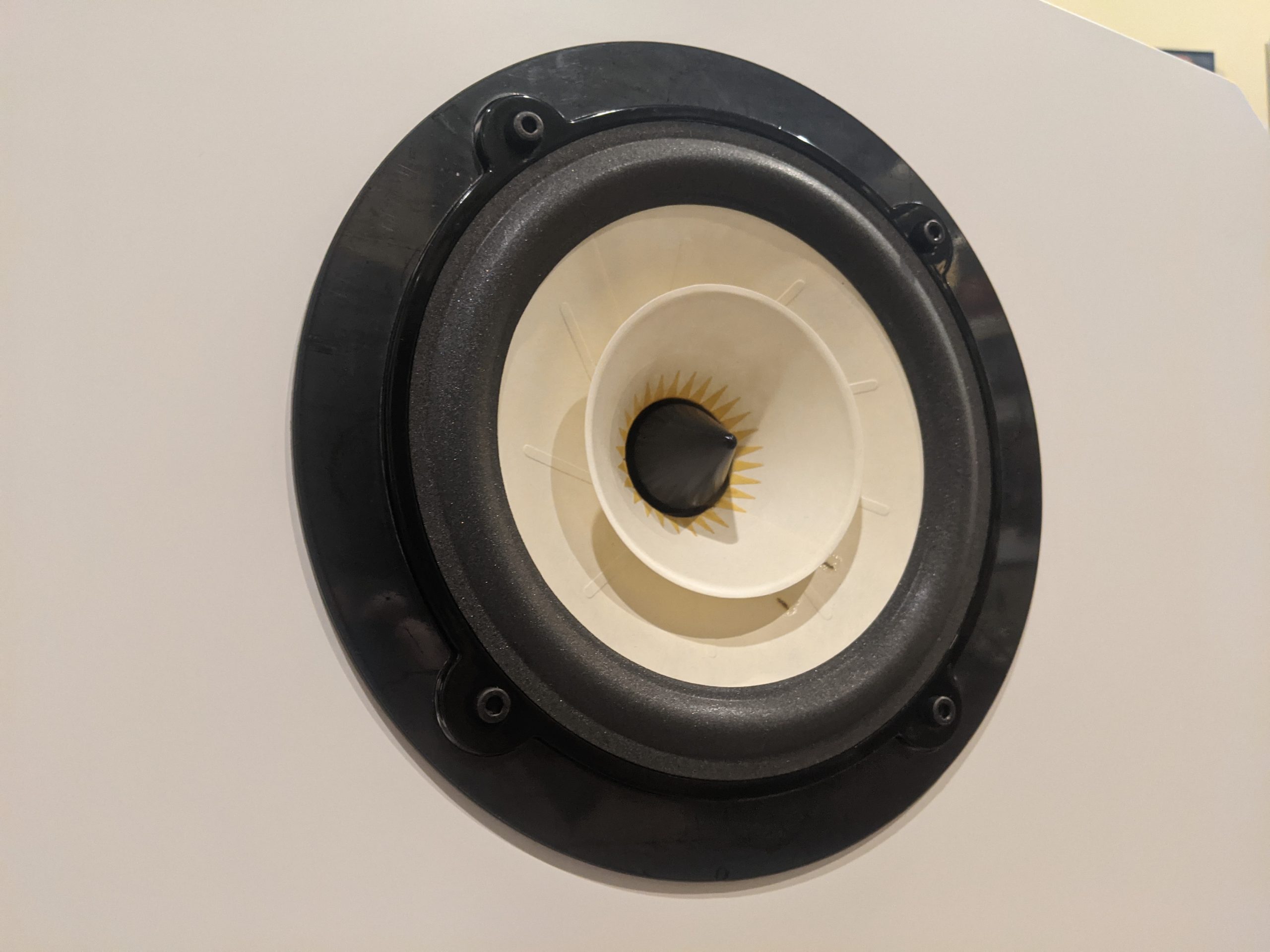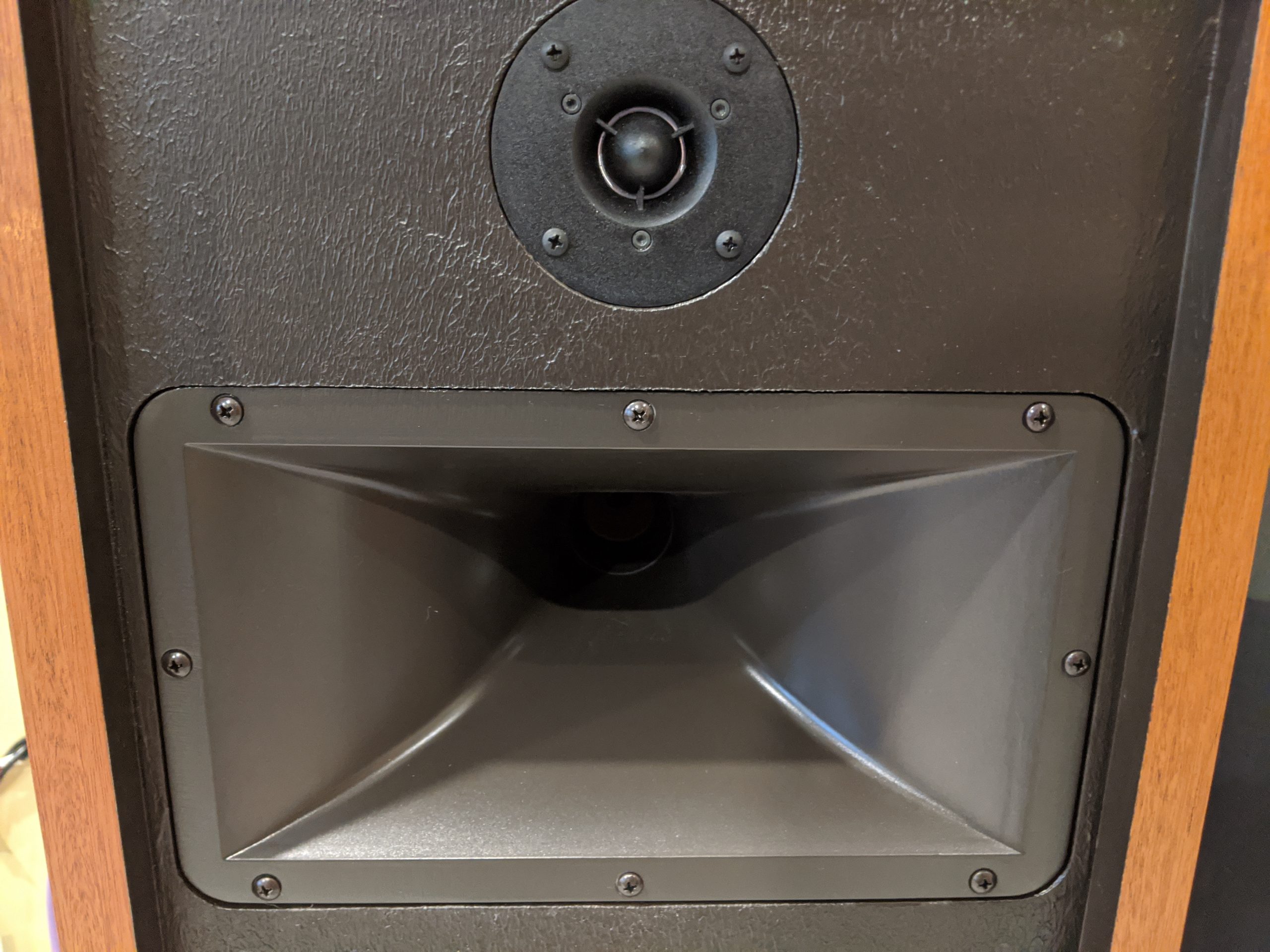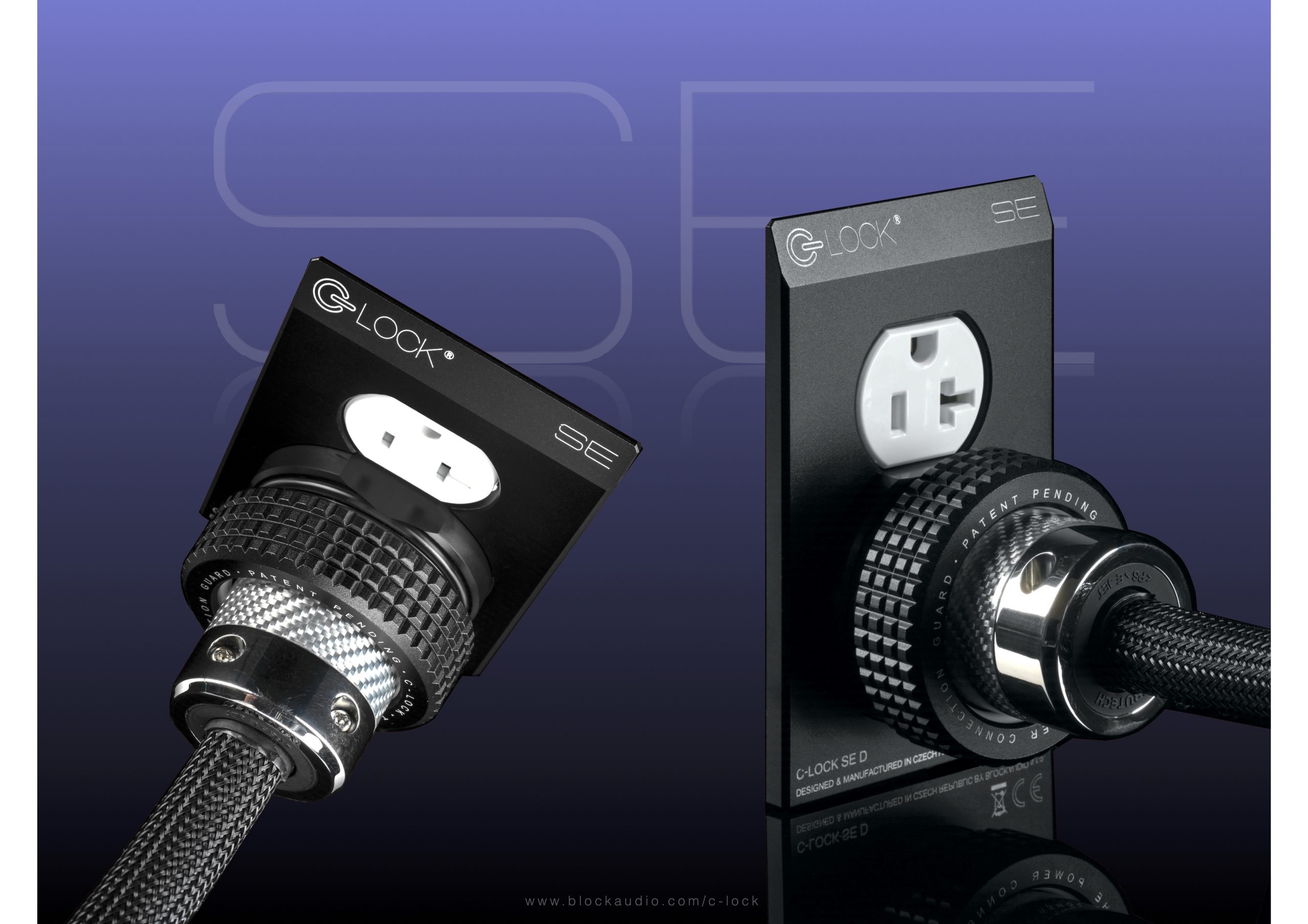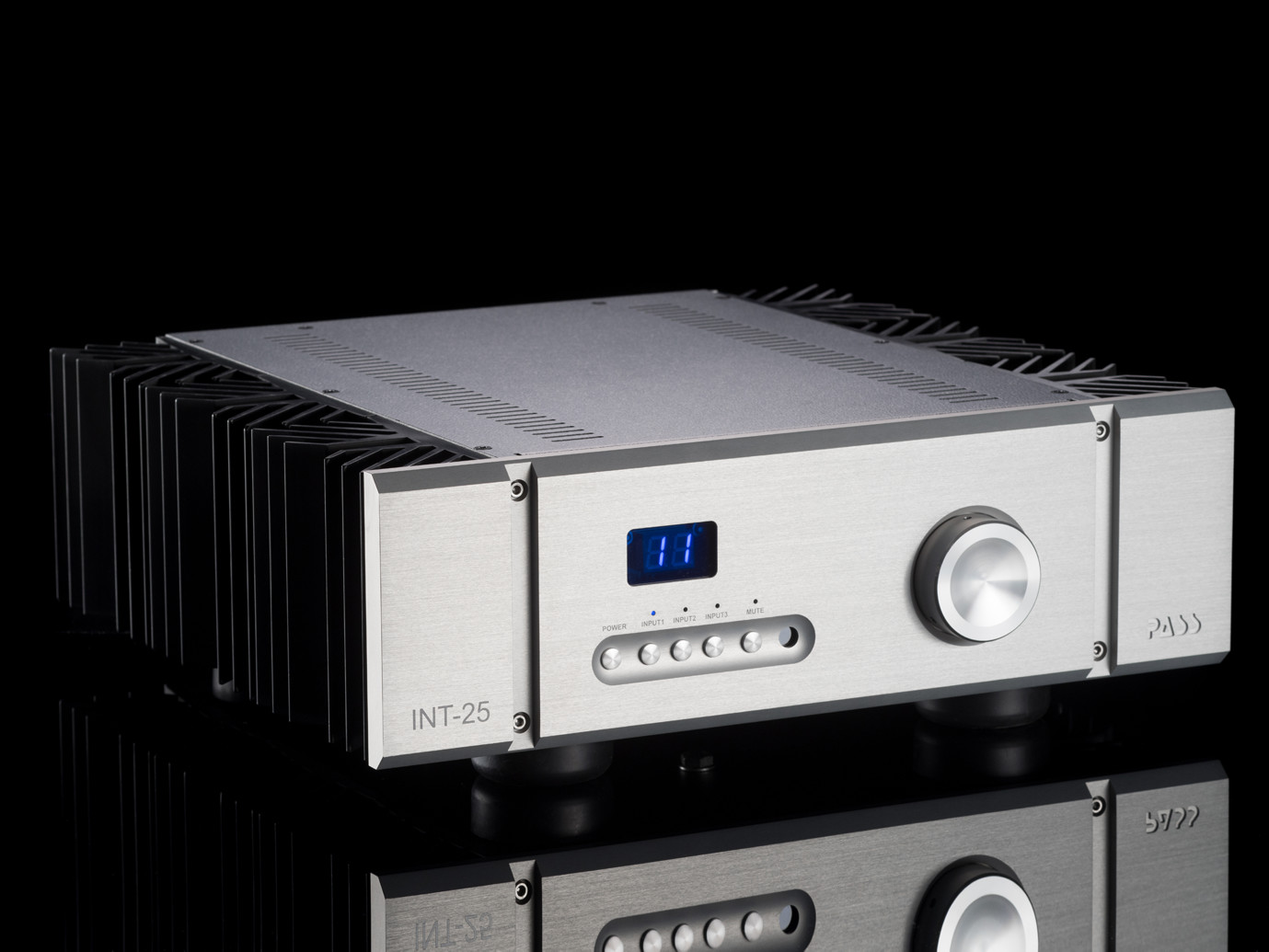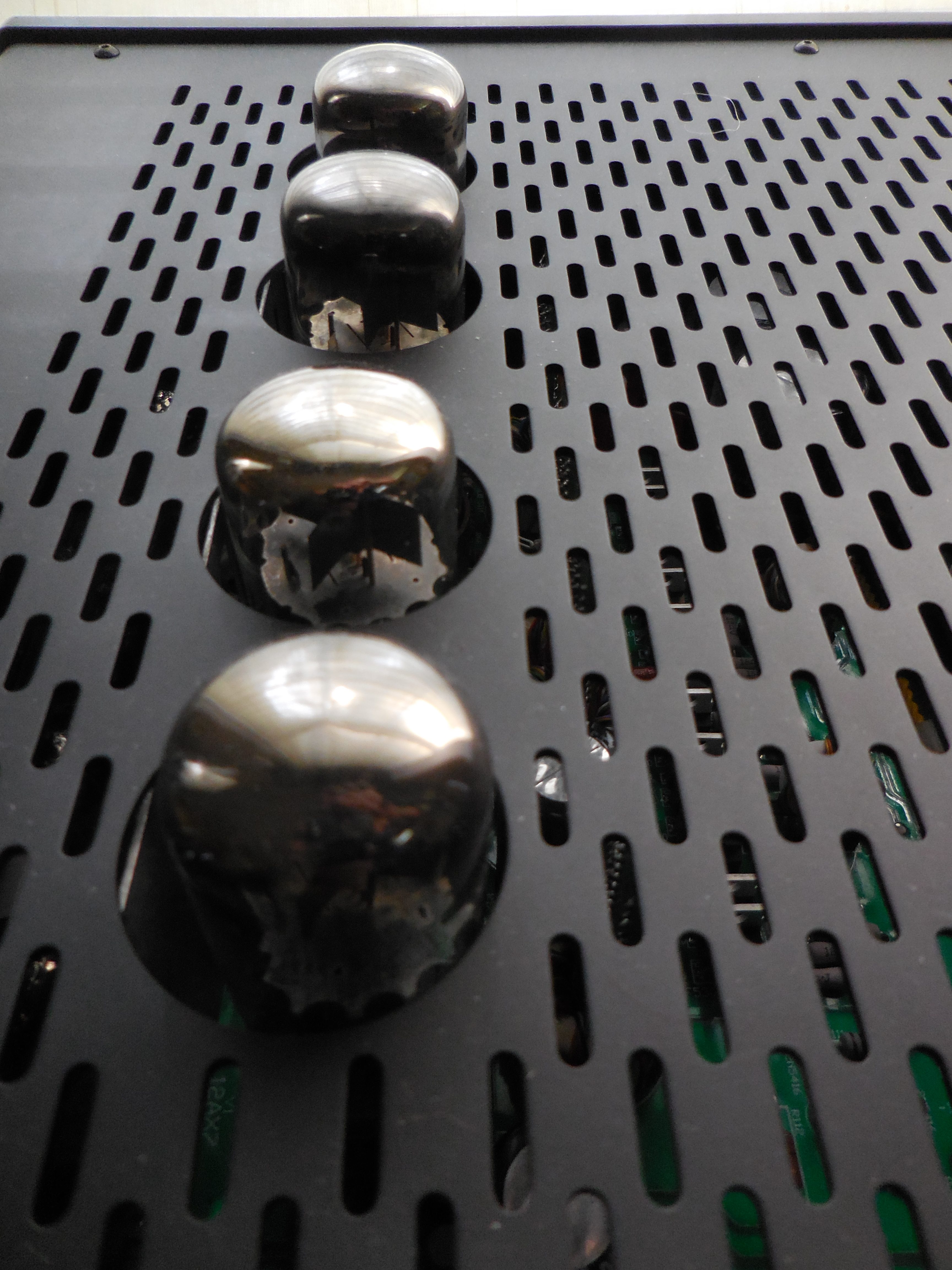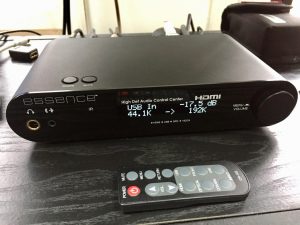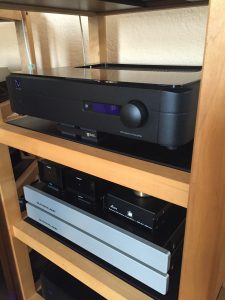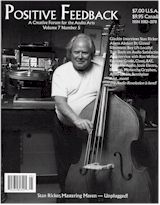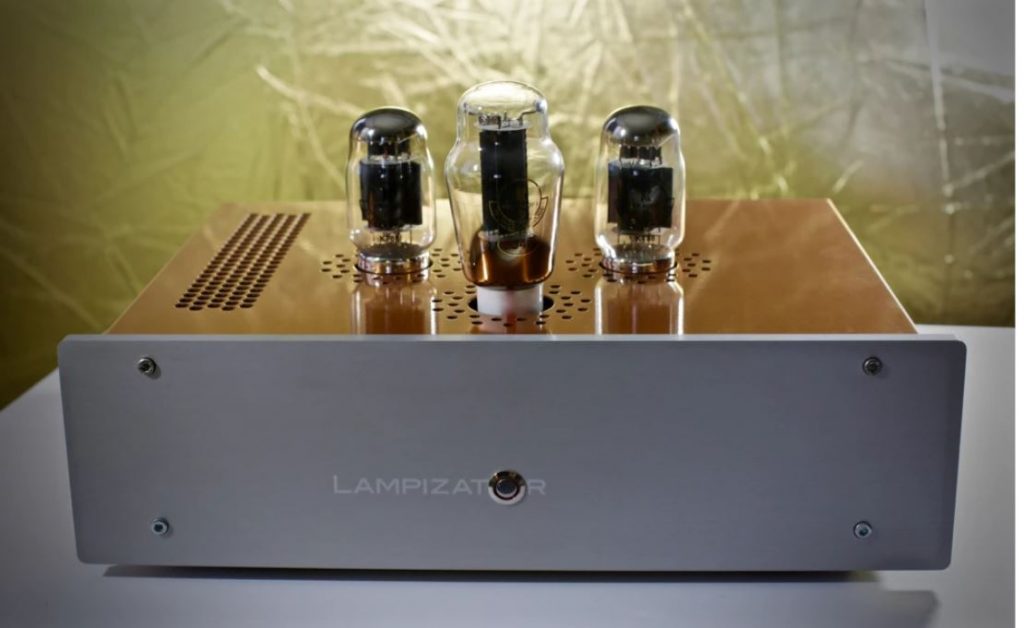
Late last year, LampizatOr North America's Fred Ainsley generously offered me an opportunity to review the new Atlantic TRP DAC. Even though the review time frame was shorter than I'd hoped for, I've wanted to hear a LampizatOr DAC at home for a long time, so I jumped at the chance to do it. Introduced in 2019, the Atlantic TRP joins its sibling, the Atlantic DAC, in the lower-middle tier of the LampizatOr product line. The difference between the two being the TRP's ability to use many different types of Tetrode and Pentode power tubes, and rectifiers; hence the TRP designation; an abbreviation for Tube Rollers Paradise!
No Rolling Necessary?
I love vacuum tube audio, and I have owned many tube-based components. With the exception of a George Wright phono stage, I'm solidly solid-state right now, yet I still have a warm place in my heart for the harmonic zip they add. Having tubes in the source was interesting, as it allowed for changing preamps and amps, while still retaining the EL-34 sound during digital playback. This is exactly why tube rolling can be exciting. Swapping tubes is akin to voicing, or (as some may complain) even tone control, but hey, sometimes a sprinkle of sonic spice can be a good thing.
Note: I was only able to hear the Atlantic TRP with the one set of tube types. Of course, this limited my ability to review a component touting tube rolling as one of its value-added attributes. Perhaps someday I'll be able to update this narrative from the viewpoint of a tube roller!
The Lampi-zkinny
Fred Ainsely, and business partner Robert Reich, are the exclusive dealers / distributors of LampizatOr in North America. As such, they handle all North American sales, marketing, support, coordination of domestic upgrades, and warranty claims. They also operate two residential showrooms (by appointment only). While Fred and Robert are the friendly faces of LampizatOr here in America, the audio products they represent are the brainchildren of electrical engineer Lukasz Fikus. All products are hand-built in the Lampizator factory in Warsaw, Poland. Not satisfied to build incredible DACs, LampizatOr also manufactures tube preamplifiers, amplifiers, digital streaming computers, cables, and various accessories.
The current LampizatOr product line-up features digital to audio converters ranging in price from around $3k to well over $30k depending on options. The base model Atlantic TRP (written about in this article) has a current price of $6800. Optional adders for balanced circuitry, and a volume control that would increase the price of a full-tilt Atlantic TRP to $9950.
(Note: Lampizator product pricing is standardized against the Euro. Please contact Lampizator North America for current pricing.)
How the Atlantic TRP Rolls
Per Lampizator...
From early 2019 we redesigned the Atlantic, mainly to enable the last missing feature from that wish list - ability to roll (change) tubes. The use of octal base pinout, compatible with power tetrodes and pentodes, plus only one and common 6.3 V heater voltage, enabled us to offer tens of different tube types to be used alternatively. Hence the new name - TRP = Tube Rollers Paradise. Just one internet tube store offers 120 tube models compatible with Atlantic TRP DAC. Add to it the multiplication of NOS brands etc. We tested TRP with circa 20 tube types, and frankly we haven't found one that plays bad.
The new Atlantic2 TRP (tube roller's paradise) is the DAC that allows end users to run on octal Power Tetrode tubes, like EL34, KT66 KT88, KT90, KT120, KT150, 6550, 6L6, 6V6, 5881, and many more variants. There are hundreds and hundreds of types and they ALL can be freely rolled in this DAC to obtain desired result. As standard we deliver the DAC with EL34—we choose the best that we can obtain from current production.
So yes, a veritable smorgasbord of tetrode and pentode tube choices for rollers is available. And the 5 volt rectifiers can be rolled too; 5u4g, 274b, GZ34, GZ408, are just a few examples of options. LampizatOr's choice to use power tubes in lieu of small signal tubes means longer tube life, and longer tube life means more money saved to try different tubes!
Tech Notes
The TRP's internal bits are housed in a fairly large, very well made enclosure which sat beautifully on top of my rack—a necessity with those tubes sticking out. The simple brushed aluminum front panel features the signature LampizatOr logo with blue LED push button. While the push button is used for power in some of the Lampi DACs, the TRP uses it to switch between the USB/DSD input, and other digital inputs.
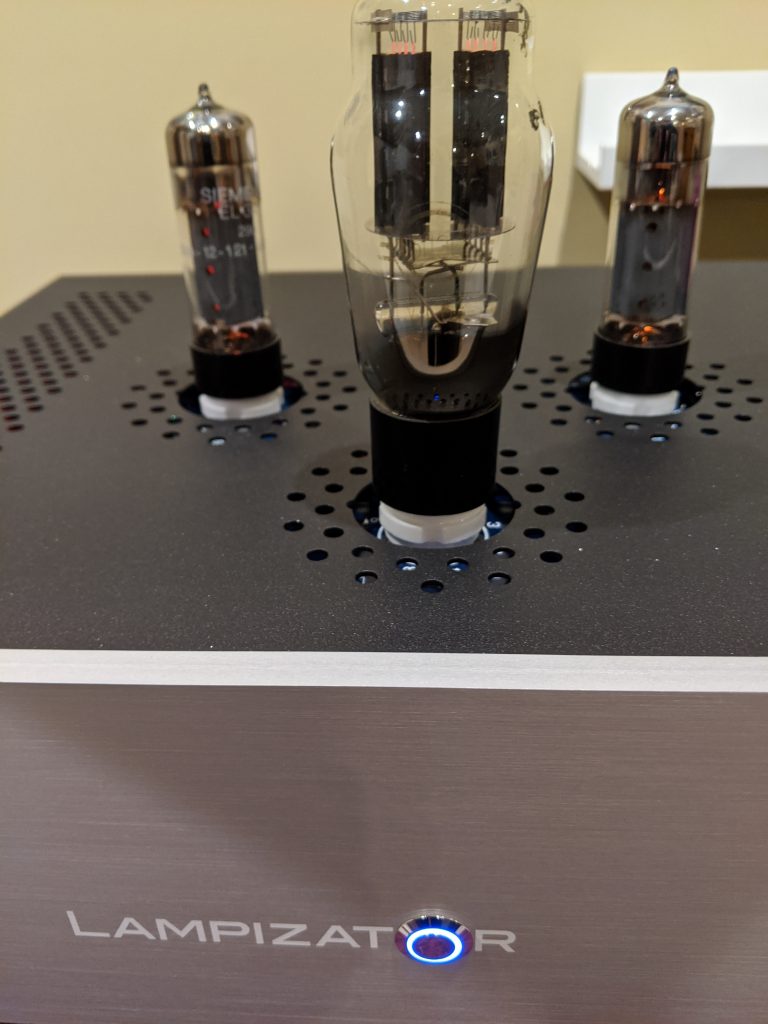
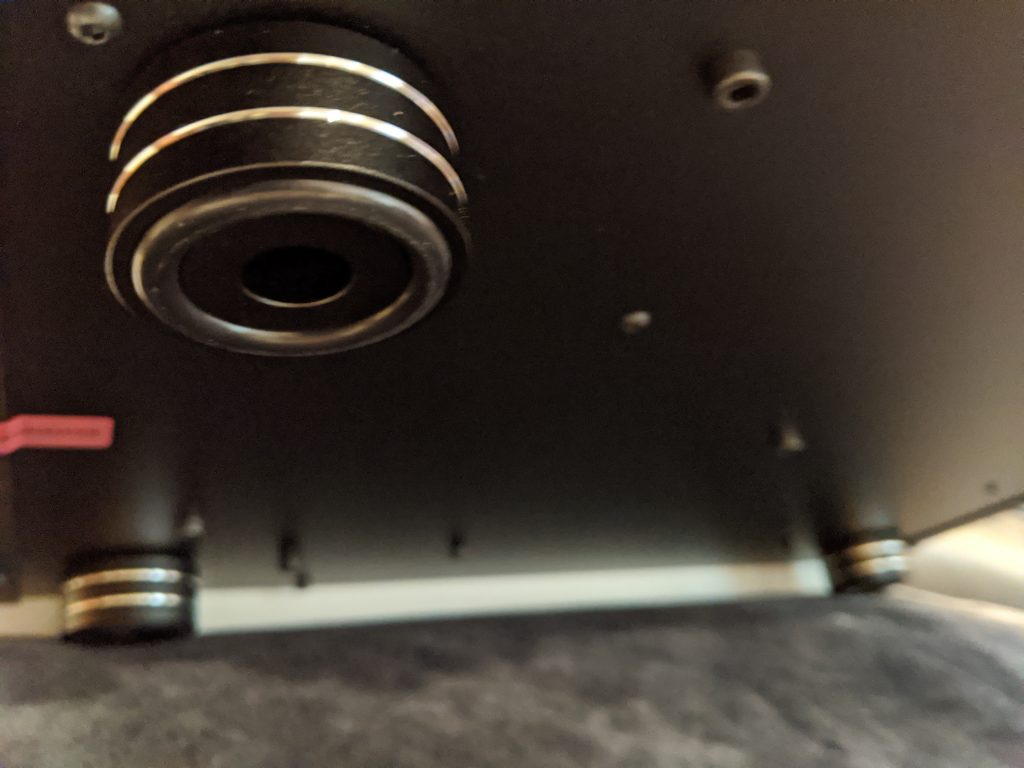
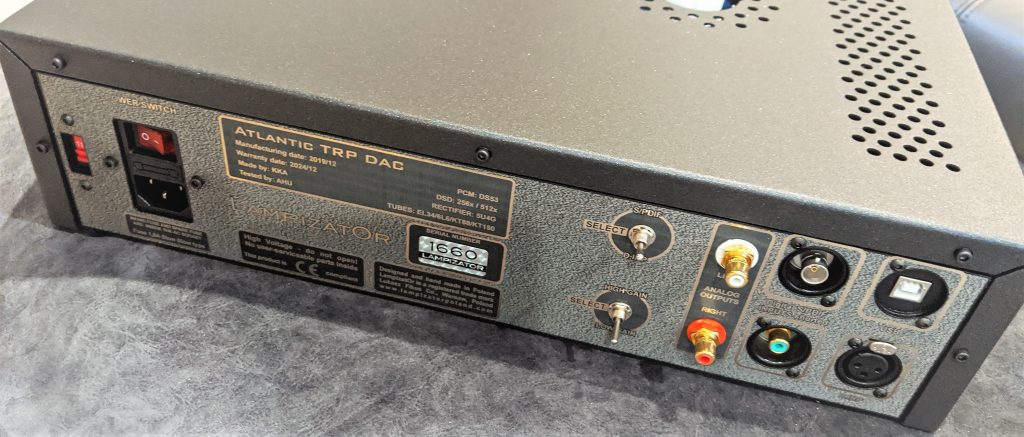
The rear of the Atlantic TRP features an IEC power inlet with a fused integral power switch. There is one left/right RCA single-ended analog output connection. There are USB, S/PDIF RCA & BNC, and AES/EBU digital inputs. In addition, there are two toggle switches; one for switching between the RCA & BNC S/PDIF inputs, and one that switches between High Gain/Low Gain settings. The digital S/PDIF connection is limited to 24-bit/192kHz playback. USB decodes and seamlessly switches between PCM files up to 24-bit/384 kHz, and DSD files up to DSD512x. The Lampizator Code 53 Digital Engine is a Delta-Sigma based converter, but all other details are proprietary.

For the majority of my audition, I fed the TRP from the USB input of my laptop, using both Roon Labs, and JRiver Media Center playback software. Since I am without a worthy dedicated CD transport these days, I connected the TRP to a little Sony CDP coax output to check operation. As expected, the combo sounded very good, but clearly the USB input was superior in my system. This experiment only told me that those with a fine CD spinner will likely have no regrets...
Per Lampizator...
The main features of this DAC are: Tube based power supply, choke CLC filtering, copper output caps, engine 53 derived from the Pacific engine design, 512*DSD, Balanced or Single ended - by order, possibility to add full preamp feature with remote control, display, and resistor ladders. Balanced configuration is truly balanced, not merely an SE circuit with phase doubler at the end. You also get analog preamp inputs, newest USB firmware for 512DSD on Linux and Windows, and as standard you get the fine EL34 tetrodes that we can obtain from series production.
USB input, PCM up to 24 bit/384 kHz files via USB , DSD 512x auto sense and auto switch pcm/dsd and all file sampling rate switching. No manual switching. Tubes are In-Directly Heated Pentodes or Tetrodes in Triode SE mode. Tubes are exposed on top so please reserve top shelf. Output caps are PureCopper Lampizator 1uF house brand made in Poland. Conversion by means of the Code 53 Lampizator digital engine (simplified Pacific engine).
While JRiver MC worked very well, I am increasingly in love with Roon Labs music playback software. Feeding the DAC from Roon was by far my favorite way to use the Lampizator. The TRP's Amenaro driver software was solid, and worked well. The Amenaro/Roon combination did tax my computer a bit more than JRMC, and would occasionally stutter if I had other programs open.
First Impressions: A Sonic Roller Coaster
The Atlantic TRP has a very different sound than any other DAC I've heard. Green out of the box, it sounded disjointed, and a little bloated, yet I could hear the TRP was presenting music in a way that I had not heard in the Tune Saloon. It was a little soft around the edges, with very specific left/right channels, and curiously perhaps, low bass that thwacked me in the stomach. There was a solid center image, along with a bit of dimensional airiness, but the stage width seemed a little constricted. It was obvious this DAC needed play time to settle in.
It took a good two days of power up for the TRP to shake its disjointedness. The EL34s needed a good burn too—they were decidedly tubey, almost flabby, for the first few hours. But by day three, the Atlantic TRP began to wake from its long sailing trip across the pond. Coherence emerged. Bass tightened, and a smooth, even, frequency response became evident. After a break-in period of a week or so, the TRP lost the bass emphasis I heard when it was brand new. From that point on, I never noted any part of the frequency spectrum that seemed to have an unnatural prominence.
Light the Lampi!
What? I don't know.
Yes, you read that right. I don't know what it is about the Atlantic TRP that I like so much. It's the Polish version of that French je ne sais quoi thing, I guess. While that may sound like a cop-out, the reality is, this is how I feel about well-designed tube components in general. There is a "certain something" about them that sends jolts of dopamine directly to my Nucleus Accumbens. And so it is with the Atlantic TRP; it trips my brain's pleasure center into full-on musical fun-time.
Even though the TRP is very smooth, almost velvety, it has exceptional resolution that pulls every bit of musical dirt from a digital file. It is forgiving to a point, but does little to coddle a truly bad recording. On Dave Matthews' "Dancing Nancies," it was obvious that there was a noise floor in the recording high enough to add harshness between the notes of busy sections, yet the TRP's rendering was still deliciously enjoyable. And I could certainly hear the hardness on a 256kbps mp3 file of "Time Won't Let Me" by The Outsiders. Even on this crappy recording, the TRP never strayed into unlistenable. It is clear to me that although the TRP does have a sound signature lightly wrapped in vacuum tube harmonics, it does not beautify poor recordings simply for the sake of doing so. Crap still sounds like crap, but you aren't as likely to be pissed if you step in it. (Ah come on, that's funny!)
I auditioned the Atlantic TRP with several different solid state amplifiers, and the DAC always sounded—for lack of a better subjective descriptor—confident. It is very, very, quiet (I never detected any tube noise, even at idle). Rather than being knife-edge neutral, it sounds warmly natural, even a bit colorful, with the supplied tubes. It is impressively cohesive. As I gained listening experience, I found myself drawn like a fly to the Lampi; it is a source that is supremely easy to listen through.
Sneaky
At times, the LampizatOr gave me the impression its soundstage was constricted, as if it rarely strayed beyond the boundary between the speakers. The truth seemed to lie in the complex staging of the Atlantic TRP. Its stage is quite three dimensional, but is sneakily so. It doesn't blow up the room like a 5.1 mix with stuff artificially flying all around. It is more artful with its bloom, and arguably, more realistic.
Images have density, realistic size, and are well placed in the stage. The TRP takes those images and gives them weight, texture, shading, and dimension. Instead of extreme width, there is width when needed. There is excellent depth, and fine layering that allows voices and instruments to float un-tethered within the space they occupy. When this included areas outside of the speakers, I definitely took notice. But rather than simply hearing a sound outside of the "normal" stage, music suddenly appeared—bloomed—whether in front, to the side, or occasionally even behind the me. This was especially noticeable with complex music: Big orchestral pieces, massed choral voices, horn sections, and background singers were always a special treat.
Dynamics are sneaky too. As with staging, the TRP is without added emphasis when it comes to changes in volume from soft to loud. While the DAC has well executed dynamics, its attack could be a bit languid, yet the decay was effortlessly protracted, and natural. While it may not be the most attack minded component I've encountered, it is very good at micro changes in volume, and will kick a little macro-butt when called upon to do so.
One must always keep in mind that tube rolling can be used to tune the TRP's sonic signature. Past experience with other tube gear suggests differences could be significant. It is always fun to explore the world of vacuum tube sound!
Tubey, or Not Tubey
After a week listening to the TRP on Low Gain (-6dB down from the standard High setting), I switched to High Gain. This was clearly the best gain structure for my system. I seemed to be able to see deeper into the mix, and there was more dynamic jump. And curiously, the background seemed blacker too. As previously stated, there was no discernible noise in either gain setting, tube or otherwise. It was this noiseless background that brought great recordings like Supertramp's Crime of the Century alive. On "Dreamer," the bells and piano were breathtakingly real, and the entire album had amazing clarity, a crazy wide stage, and brilliant vocals. The Atlantic TRP's stage is definitely not constricted, it just takes the right recording to show it.
There is a definite contribution to the sound of the TRP by the EL 34's plugged into it. It is a slightly colorful, somewhat warm, mid-centric sound, that can also be powerfully bold. There is a wonderful sense of "being there" on most recordings. On the Yardbirds "Like Jimmy Reed Again," shimmering cymbals sounded so alive, I felt like I was in the studio with the band!
Bass is very deep, and meaty, and although there is a bit of roundness, it is reasonably well controlled. The sound-field floats in the air, pushing right up to my listening seat, and back to the front wall. Again, the stage was not always especially wide, tending to remain mainly between the speakers except on certain recordings with lots of spatial information. But when the moment arrived for the stage to explode, it did so in spectacular fashion. The TRP loved soaring vocals, and especially female vocalists. Lucinda Williams' emotional growl, and vulnerable sweetness came through clearly on her fab 1992 recording Sweet Old World. And there was no stopping that female vocal train; Ronstadt, Mary Chapin-Carpenter, Nancy Griffith, Aimee Mann...I couldn't get enough. But the LampizatOr Atlantic TRP Dac is not a one-trick pony. I couldn't find a single genre of music that it didn't shine with; it is without a doubt, a music-lovers audio component.
Sweet as Szarlotka
After sailing by air from its native Poland, the LampizatOr Atlantic TRP provided quite a thrilling experience in the Tune Saloon. Its ability to create an analog adventure from ones and zeros was captivating. Unlike some modern tube designs that try to sound like solid-state, the TRP plays along with all the good parts of tube sound, but without the negatives that so many believe are part and parcel of the tube experience.
Most high-end digital to analog converters sound pretty damn good these days, and sometimes there doesn't seem to be a lot of differences between them. The Atlantic TRP has afforded me the opportunity to hear a DAC that presents music in a manner like no other I've had in house. The TRP wasn't showy, yet it bloomed with a big sound in a colorful space. It caressed my ears with natural sweetness without being slow, and provided excellent resolution without being etched.
This is not an audio component that is easy to tie a bow around. I doubt most of us can fully appreciate its capabilities in a few minutes, or even a few hours. For me, the TRP is not about gobs of detail, or exciting aural pyrotechnics. It is about observational listening. Hearing the little things that elevate technical prowess to emotional connection. It's about feeling the twinkling bells, burnished brass, rosined bow, and sinewy strings. It's about appreciating the power of a barrel-chested baritone, and the feathery grace of an accomplished soprano. It is about groovin' to Bob Seger's "Turn the Page," while admiring how the sax lights up the background as it lives just below Bob's voice. And although the brain recognizes, compartmentalizes, and integrates those little things; the Atlantic TRP let me cherish them as part of a musical masterpiece. No digital converter has ever done that for me. In fact, the TRP is the least digital, digital component I've ever had the pleasure to audition.
Damn it, Lukasz.
If right now you are sitting on your couch in isolation salivating over a new DAC, especially one with a tube output stage that will allow you to use lots of tubes in the tube bag, then you must check out the Lampizator Atlantic TRP… I think you will dig it. I certainly did.
The Wrap: A Current Commentary
As William Congreve famously wrote in 1697, "Music has charms to soothe the savage beast." Perhaps these days, that 'beast' is too much solitude, and worry.
I feel very fortunate to be able to review fine audio products like the LampizatOr Atlantic TRP DAC. In general, we audiophiles are a pretty lucky lot. No matter what kind of music we enjoy. No matter what kind of system we own. No matter what country from which we hail: A wonderful audio system can help us navigate the rough, uncharted waters in which we currently find ourselves. Enjoy yours to its fullest, and when the all clear is finally sounded, share it generously with others. Until then my friends, stay healthy, be kind, help others who need it, and share the love of music when, and where, you can.
Atlantic TRP DAC
Retail: $6800 USD (Base S.E. configuration)
LampizatOr
North American Distributor for LampizatOr
631.813.8992
https://www.facebook.com/lampizatorna/




